Fujiwara Clan › Furies › The Aztec New Fire Ceremony » Origins and History
Articles and Definitions › Contents
- Fujiwara Clan › Ancient History
- Furies › Ancient History
- The Aztec New Fire Ceremony › Antique Origins
Ancient civilizations › Historical places, and their characters
Fujiwara Clan › Ancient History
Definition and Origins
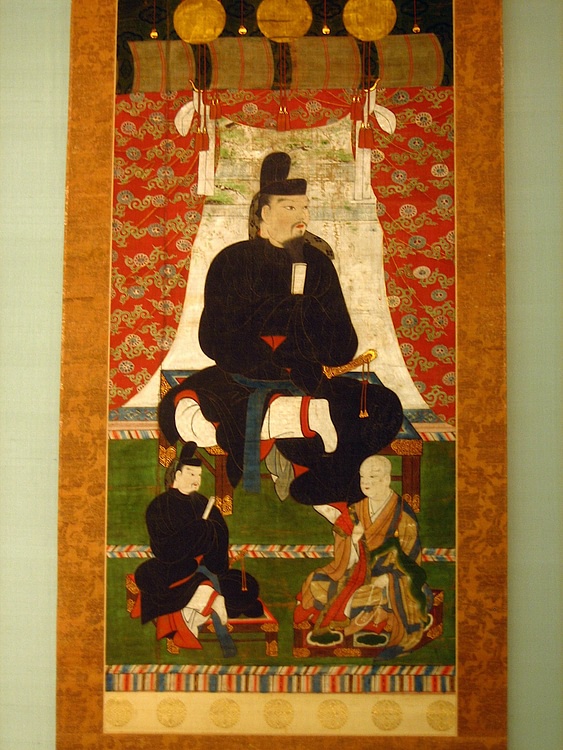
The Fujiwara clan ( Fujiwara -shi ) was a powerful extended family group which dominated all areas of Japanese government during the Heian Period (794-1185). Founded by Fujiwara no Kamatari in 645 CE, male members held on to key official positions, many acting as regents to the emperor, and ensured their daughters married into the imperial line. By the 12th century CE, Fujiwara power declined as successive emperors abdicated in favour of their own chosen heir while still maintaining their hold on power in retirement. The Fujiwara were ultimately replaced by the rival Taira and Minamoto clans.
FUJIWARA NO KAMATARI
In the 7th century CE the court official Nakatomi, later to become Fujiwara no Kamatari (614-669 CE), became a useful ally to Prince Naka no Oe, and together they staged a coup in 645 CE which deposed the powerful Soga clan who had hitherto dominated government positions and were threatening to usurp the power of the emperor. A series of political reforms were then initiated, known as the Taika Reforms ( Taika No Kaishin ). These reforms were based on the Chinese model of strong central government and they nationalised land, reorganised the court ranking system, forbade the ownership of unauthorised weapons, and attempted to root out corruption. When the Prince became Emperor Tenji (661-671), he gave Nakatomi and his descendants the surname Fujiwara and made him his special minister.
Kamatari's son Fubito (aka Fuhito, 659-720 CE) married the daughter of Emperor Mommu, and his four grandsons each formed the four branches of the Fujiwara clan: Nanke (Southern House), Hokke (Northern House), Shikike (Ceremonials House), and Kyoke (Capital House). The Fujiwara line was now firmly established and they would keep a tenacious grip on power as they not only dominated policy and government bodies such as the household treasury office ( kurando - dokoro ) and Council of State but also managed to marry off their daughters to emperors.
THERE WERE 21 FUJIWARA REGENTS FROM 804 CE TO 1238 CE.
FUJIWARA NO YOSHIFUSA
One such figure was Fujiwara no Yoshifusa (804-872 CE) who was the clan leader ( uji no choja ) from 858 CE. He put his seven-year-old grandson on the throne in 858 CE and then formally became his regent in 866 CE. This was the first time a regent had not been of royal blood and it established a trend that would continue into the 11th century CE. The Fujiwara, and especially the Northern House, now had direct control over the emperors, and so there was no need to remove the institution, although individuals who proved less than cooperative could be forced into abdication and one or two emperors disappeared in mysterious circumstances or ended up in monasteries. In addition, the clan's own private militia ensured that their position was never seriously threatened by outsiders.
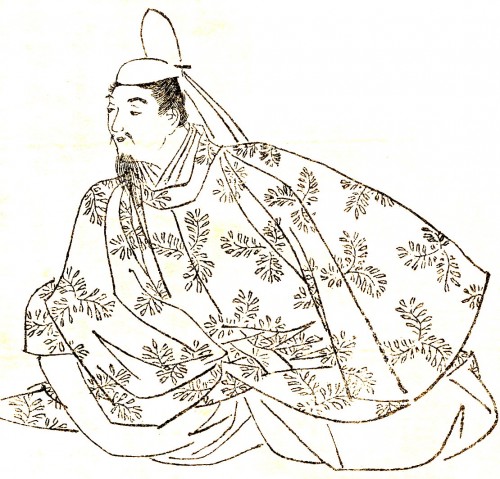
Fujiwara no Yoshifusa
INTERNAL RIVALRIES
Fujiwara control was almost total but there were threats from within. Rivals jockeyed for position within the state apparatus and in the provinces where government control was weaker. The northern Fujiwara, for example, had established a prosperous administrative base at Hiraizumi in northern Honshu and their dominance was repeatedly challenged by the other branches of the clan. One notable rebellion was led by the clan rebel Fujiwara no Sumitomo in the Iyo province on Shikoku. He commanded a large pirate fleet that plagued the sea between Japan and mainland Asia, and he became a hero to the local hard-pressed peasants when he attacked government granaries. The rebellion was soon quashed, though, following Sumitomo's death in 941 CE. Still, the Fujiwara was now such a widespread organisation with so many branches it was almost inevitable that there would be disputes over who should be its leading figure and have the coveted responsibility and control of the clan's lands, income, and civil appointments. The clan also controlled many temples and shrines, including such jewels as Byodo-in at Uji and the Fujiwara family temple, the Kofuku-ji complex in Nara, founded in 669 CE.
FUJIWARA NO MICHINAGA
Another important Fujiwara figure was Michinaga (966-1028 CE) who became the clan's leader in 995 CE. During his 30-year reign as the most powerful individual in Japan, he married off four daughters to four emperors and so eventually came to have an impressive four emperors as grandsons. The Fujiwara were at their zenith and Michinaga could claim in his famous poem: “No waning in the glory of the full moon - this world is indeed my world!” (Whitney Hall, 70). Michinaga retired from politics and became a Buddhist monk in 1019 CE - he had already prepared the way by founding the Hojoji temple - but he still pulled the strings of power through his son Yorimichi (992-1074 CE). When he died in 1027 CE, Michinaga was said to have clasped in his hands strings of a different kind, silk cords which ran to several statues of the bodhisattva Amida in the hope that they would pull him to the Pure Land of the Buddhist afterlife. Michinaga's life became the subject of the Eiga monogatari, an 11th century CE history.
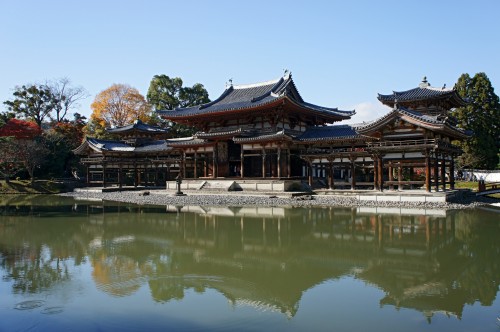
Phoenix Hall, Byodo-in
DECLINE IN POWER
The dominance of the Fujiwara was not quite total and did not always go unchallenged. One of the first attempts by the emperors to reassert their power and independence was by Emperor Uda. He sought to break the Fujiwara monopoly by promoting one Sugawara Michizane (845-903 CE), an outsider of lowly social rank, to the high position of Minister of the Right and a member of the Council of State in 899 CE. In 901 CE, the Fujiwara fought back and concocted an accusation of treason against Sugawara with the result that he was effectively exiled. Sugawara would get his revenge when certain disasters befell the palace and state following his death, ultimately even being officially deified as the Shinto god of scholarship under the honorary title of Tenjin. Nevertheless, for the Fujiwara, normal service had resumed.
Emperor Shirakawa (r. 1073-1087 CE) attempted to assert his independence from the Fujiwara by abdicating in 1087 CE and allowing his son Horikawa to reign under his supervision. Shirakawa's own father, Emperor Go-Sanjo (r. 1068-1073 CE) had done exactly the same but had died a year after abdicating. Shirakawa, on the other hand, ruled behind the scenes for over three decades. Emperors, from that time on, also created their own bureaucracy of power similar to that of the Fujiwara clan.This strategy of 'retired' emperors still, in effect, governing became known as 'cloistered government' ( insei ) as the emperor usually remained behind closed doors in a monastery.
RETIRED EMPERORS & RIVAL CLANS WITH THEIR ARMED RETAINERS BEGAN TO THREATEN THE DOMINANCE OF THE FUJIWARA CLAN.
In the provinces, new forces were emerging which would challenge the dominance of the Fujiwara even more seriously. Left to their own devices and fuelled by blood from the minor nobility produced by the process of dynastic shedding (when an emperor or aristocrat had too many children they were removed from the line of inheritance), two important groups evolved, the Minamoto (aka Genji) and Taira (aka Heike) clans. With their own private armies of samurai, they became important instruments in the hands of rival members of the Fujiwara clan's internal power struggle which broke out in the 1156 CE Hogen Disturbance.
In 1156 CE the death of the retired emperor Toba caused a bid for power from two rival groups within the Fujiwara clan, each with their own claimant to be next emperor. Tadamichi Fujiwara supported Go-Shirakawa while his brother Yorinaga sided with the retired emperor Sutoku. The Taira clan sided with the Go-Shirakawa and the Minamoto clan sided with Sutoku, although things were made even more complicated when Yoshitomo, son of the Minamoto leader Tameyoshi, sided with Go-Shirakawa.After the violence rather euphemistically called the Hogen Disturbance ( Hogen No Ran ) was over, Go-Shirakawa and his supporters had won the day.
The Taira, led by Taira no Kiyomori, eventually swept away all rivals and dominated government for two decades. However, in the Genpei War (1180-1185), the Minamoto returned victorious, and the clan leader, Yoritomo, was given the title of shogun by the emperor. Yoritomo's rule would usher in the Kamakura Period (1185-1333 CE), also known as the Kamakura Shogunate, when Japanese government became dominated by the military.
The Fujiwara may have lost political power but the clan continued as an important aristocratic family with many members continuing to hold titled positions, even if those roles had no direct bearing on government. The provinces were another redoubt for Fujiwara members no longer able to acquire through patronage key positions at court. In later times the clan produced some noted writers and poets, amongst them Fujiwara no Sadaie who in 1205 CE compiled the Shin Kokinshu, an imperial poetry collection.
This article was made possible with generous support from the Great Britain Sasakawa Foundation.
Furies › Ancient History
Definition and Origins

The Furies (or Erinyes, sing. Erinys) were creatures from Greek mythology who exacted divine retribution from those guilty of wrong-doing. Crimes which were especially likely to incur their wrath were those involving one's family and anything related to oaths. The Furies were also responsible for carrying out curses, and the punishments they dealt out included disease and madness. From the 5th century BCE they are sometimes referred to by the euphemistic title 'the Gracious Ones' or Eumenides.
HESIOD & HOMER
The Furies may go back to prehistoric times in Greece as the word 'Erinys' appears in Linear B and she was long-identified with Demeter, the agricultural goddess, in Arcadia, and with Potnia, the ancient 'Mistress' goddess, in Boeotia. Their earliest mention in literature is in the work of Hesiod and Homer.
In Theogony Hesiod describes their birth but, as with most later sources, he does not specify their number. When the blood from the castrated Uranus hit the earth, from there sprang the Furies. They are, therefore, the daughters of Earth and Sky.Immediately, then, there is a connection with family arguments for Uranus was attacked by his son, the titan Cronus. In Hesiod's Works & Days we are told that the Furies attended the birth of Oath, whose mother was Strife.
PUNISHERS OF WRONG-DOING IN GENERAL, THE FURIES WERE CONSIDERED PROTECTORS OF THE RIGHTS OF SENIOR FAMILY MEMBERS
In Homer's Iliad the Furies can prevent an individual from using their reason and so lead them to unusual and stupid acts. The example here is of Agamemnon who unwisely stole the prize of Achilles and so upset the hero that he withdrew from the Trojan War. In Book 15 of the Iliad we are reminded that they favour the eldest sibling when Iris reminds Poseidon of the folly of going against his older brother Zeus. Homer also mentions that they live in Erebos, or darkness, and have no pity in their hearts. In the Odyssey Homer describes them as the 'Avenging Furies' and they curse Melampus, king of Argos, with temporary madness.
ASSOCIATIONS & PURPOSE
Punishers of wrong-doing in general, the Furies were considered protectors of the rights of senior family members, especially mothers, fathers, and elder siblings. A famous example is their pursuit of Orestes after he killed his mother Clytemnestra. The Furies would carry out punishments according to curses given by such members. Outside the family, the Furies protected such social outcasts as beggars. They acted, too, as the guarantors of oaths and the punishers of those who swore false oaths. The dark nature of their task led them to being closely associated with Hades, the Greek Underworld, where they escorted the wicked to their torments. The writer of Greek tragedy Aeschylus, for example, refers to the Furies as the daughters of Night.

Orestes Pursued by a Fury
THE FURIES IN ART
The Furies appear on Greek pottery decoration, typically with wings and either carrying snakes or with snakes in their hair.They are often seen pursuing Orestes and on other occasions in the company of either Hades or Hecate, the lunar goddess associated with witchcraft. The Furies feature in the works of all three great Greek tragedians, Aeschylus, Sophocles, and Euripides (see especially Orestes ). In Aeschylus' plays, they appeared on stage wearing all black and with snakes instead of hair. They continue to appear in Etruscan and Roman art when they become just three, are given the names Allecto, Megaera, and Tisiphone, and are referred to collectively as the Dirae.
The Aztec New Fire Ceremony › Antique Origins
Ancient Civilizations
The New Fire Ceremony, also known as the Binding of the Years Ceremony, was a ritual held every 52 years in the month of November on the completion of a full cycle of the Aztec solar year ( xiuhmopilli ). The purpose of it was none other than to renew the sun and ensure another 52-year cycle. The New Fire Ceremony, or Toxhiuhmolpilia, as the Aztecs themselves called it, was by far the most important event in the religious calendar because, quite simply, if the ceremony failed, then the Aztec civilization would end.
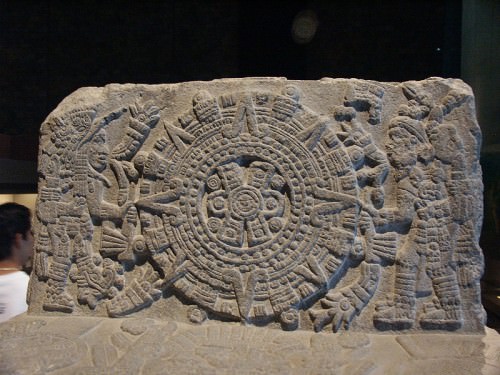
Throne of Motecuhzoma, Detail
THE SOLAR CALENDAR
The timing of the ceremony and the number 52 were significant as this was the exact coinciding point of the first days of the two Aztec calendars which were then in simultaneous use: the ancient Mesoamerican and sacred tonalpohualli 260-day cycle and the xiuhpohualli, the Aztec 365-day solar and ceremonial calendar. In addition, every second cycle (104 years) was given even more significance as on that precise date the tonalpohualli coincided with the 52-year cycle. The Aztecs saw such time cycles as a mirror of the ancient cosmic cycles which, in Aztec mythology, had created the world. The historian Jacques Soustelle describes well the reason a ritual like the New Fire Ceremony was of such concern to the Aztecs,
At bottom the ancient Mexicans had no real confidence in the future, their fragile world was perpetually at the mercy of some disaster: there were not only the natural cataclysms and the famines, but more than that, on certain nights the monstrous divinities of the west appeared at the crossroads, and there were the wizards, those dark envoys from a mysterious world, and every fifty-two years there was the great fear that fell upon all the nations of the empire when the sun set on the last day of the 'century' and no man could tell whether it would ever rise again (114).

Mask of Xiuhtecuhtli
XIUHTECUHTLI GOD OF FIRE
The ceremony was overseen by Xiuhtecuhtli, also known as the 'Turquoise Lord', the Aztec god of fire. His name reveals not only his association with turquoise but also with Time, as xiuhitl in Nahuatl, the language of the Aztecs, meant both 'turquoise' and 'year'. Fire, as with many other ancient cultures, was considered a fundamental element of the universe, present in all things. Xiuhtecuhtli's pillar of fire was believed to run right through the cosmos from Mictlan, the Underworld, to Topan, the Heavens. The association between the sun and fire is made in Aztec mythology with the self-sacrifice of the gods Nanahuatzin and Tecuciztecatl who threw themselves into a fire at Teotihuacan in order to produce the Sun and Moon respectively. As we shall see, in the New Fire Ceremony one particular fire was essential to the success of ensuring the return of the life-giving sun.
PREPARATION FOR THE CEREMONY
Preparation for the ceremony began with the extinguishing of all fires of any kind, from temples to household hearths - the latter being especially associated with Xiuhtecuhtli. Next, a thorough cleaning operation was undertaken with the streets being swept, old hearth stones were thrown away along with old cooking utensils, old clothes too, and even idols were ceremoniously washed and cleansed. Another ritual was to tie bundles of 52 reeds together, creating a symbolic xiuhmopilli.Pregnant women were locked in granaries and their faces were painted blue in the belief that they would not then turn into monsters during the night. Children also had their faces painted and were kept from sleeping to prevent them turning into mice.Finally, as darkness fell, the populace stopped all activities, climbed the roofs of their homes and waited with a hushed silence and baited breath for what was to come.
IF THE FIRE BURNED BRIGHTLY THEN XIUHTECUHTLI HAD BLESSED THE PEOPLE WITH ANOTHER SUN. IF NOT, THE WORLD WOULD END.
THE CEREMONY
Then, just outside the Aztec capital of Tenochtitlan, high priests gathered at the summit of the sacred volcanic mountain south-east of Lake Tetzcoco, Mt. Uixachtecatl (also referred to as Huixachtlan or Citlaltepec and meaning 'thorn tree place', even if it is now called 'Hill of the Star'). The priests were magnificently dressed as the gods with fine cloaks, masks, and feather headdresses and led by the figure of Quetzalcoatl. Here, on a platform visible to the whole city below, the priests waited until midnight and a precise alignment of the stars which would signal the ceremony could begin. When the Tianquiztli(the Pleiades) reached their zenith and the Yohualtecuhtli star shone brightly in the very centre of the night sky, this was the moment a human sacrifice was made. The High Priest, probably dressed as Xuihtecuhtli and wearing a turquoise mask, cut out the heart from the living victim and a fire was kindled in the empty chest cavity using the sacred firestick drill, the tlequauitl.If the fire burned brightly, then all was well and Xiuhtecuhtli had blessed the people with another sun. If the fire did not catch, then the Tzitzimime would come without pity. These terrible monsters, armed with wickedly sharp knives, would roam the dark and sunless earth slashing and eating all humanity without exception. The world would end.
Fortunately, this terrible tragedy never occurred, and after each ceremony, when the fire burned well within the victim's chest, the flame was used to light a huge pyre so that all could see the success of the ceremony in the city below. Then the flames were transferred to Tenochtitlan where they were used to light the fire at the temple of Huitzilopochtli on top of the Templo Mayor pyramid. Next, the fire at the city's Fire Temple was lit and from there, runners ensured that all the fires of the city were, once again, lit.
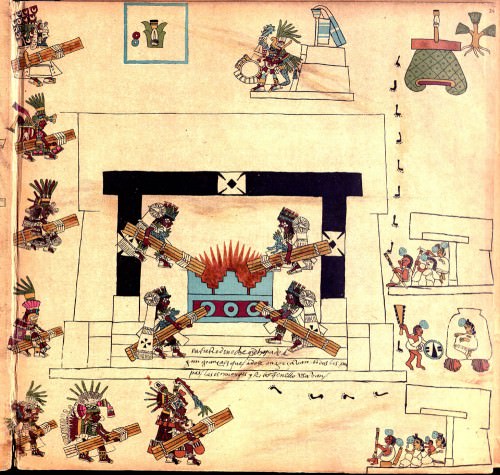
Aztec New Fire Ceremony
Following the successful ceremony, hearth stones were renewed and offered incense and quails in thanks. Then, after a suitably pious morning of fasting, there was, understandably, a great deal of partying. The revellers wore new clothes, feasted on amaranth-seed and honey cakes, and drank pulque beer. A little later, Aztec rulers, buoyed by this divine endorsement of their rule, would embark on a series of state building projects such as Motecuhzoma I did in 1455 CE when he greatly enlarged the Templo Mayor at Tenochtitlan.
The New Fire Ceremony was successfully held in 1351, 1403, 1455, and again in 1507 CE. Curiously, although perhaps indicative of the belief that each cycle was a new beginning, the Aztecs did not specifically date different 52-year cycles. The calendar, as it were, was each time reset to zero. The last New Fire Ceremony, then, ushered in the 5th sun of the Aztec era, poignantly the last according to Aztec mythology and, with the arrival of the European invaders, so it turned out to be.
THE NEW FIRE CEREMONY IN ART
The New Fire Ceremony is referred to in various instances of Aztec and colonial art. Stone sculptures representing the xiuhmopilli bundles have been excavated at Tenochtitlan, each with a date stamp hieroglyph of the year they were produced.The ceremony of relighting the fires at Tenochtitlan is represented in an illustration in the Codex Borbonicus (Sheet 34), c.1525 CE. Priests carry bundles to transfer the fire and they wear turquoise masks, as do other citizens, including women and children. Also included is an image of Montezuma (aka Motecuhzoma II ), the Aztec ruler who presided over that final ceremony in 1507 CE.
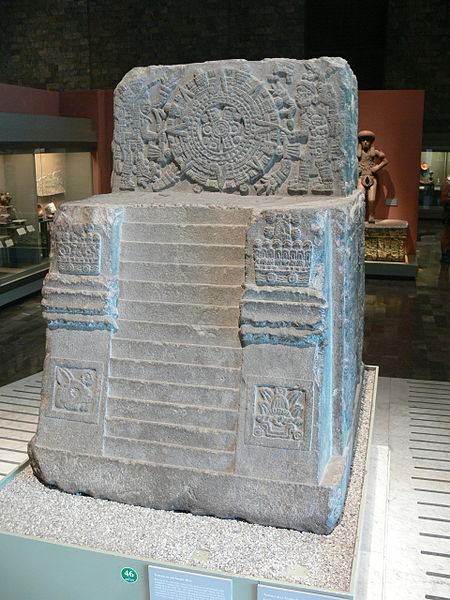
Throne of Motecuhzoma II
One of the most famous of all Aztec artworks is the turquoise mosaic mask of Xiuhtecuhtli now in the British Museum.Perhaps similar to the masks worn by the High Priests in the Fire ceremony it has conch shell eyes and dates to the 14th century CE. Finally, the celebrated Throne of Motecuhzoma II was specifically sculpted to commemorate the New Fire Ceremony of 1507 CE. The throne has date glyphs carved on the front, a depiction of Xiuhtecuhtli and other gods at the sides, and the seat back carries a large sun disk.
LICENSE:
Article based on information obtained from these sources:with permission from the Website Ancient History Encyclopedia
Content is available under License Creative Commons: Attribution-NonCommercial-ShareAlike 3.0 Unported. CC-BY-NC-SA License